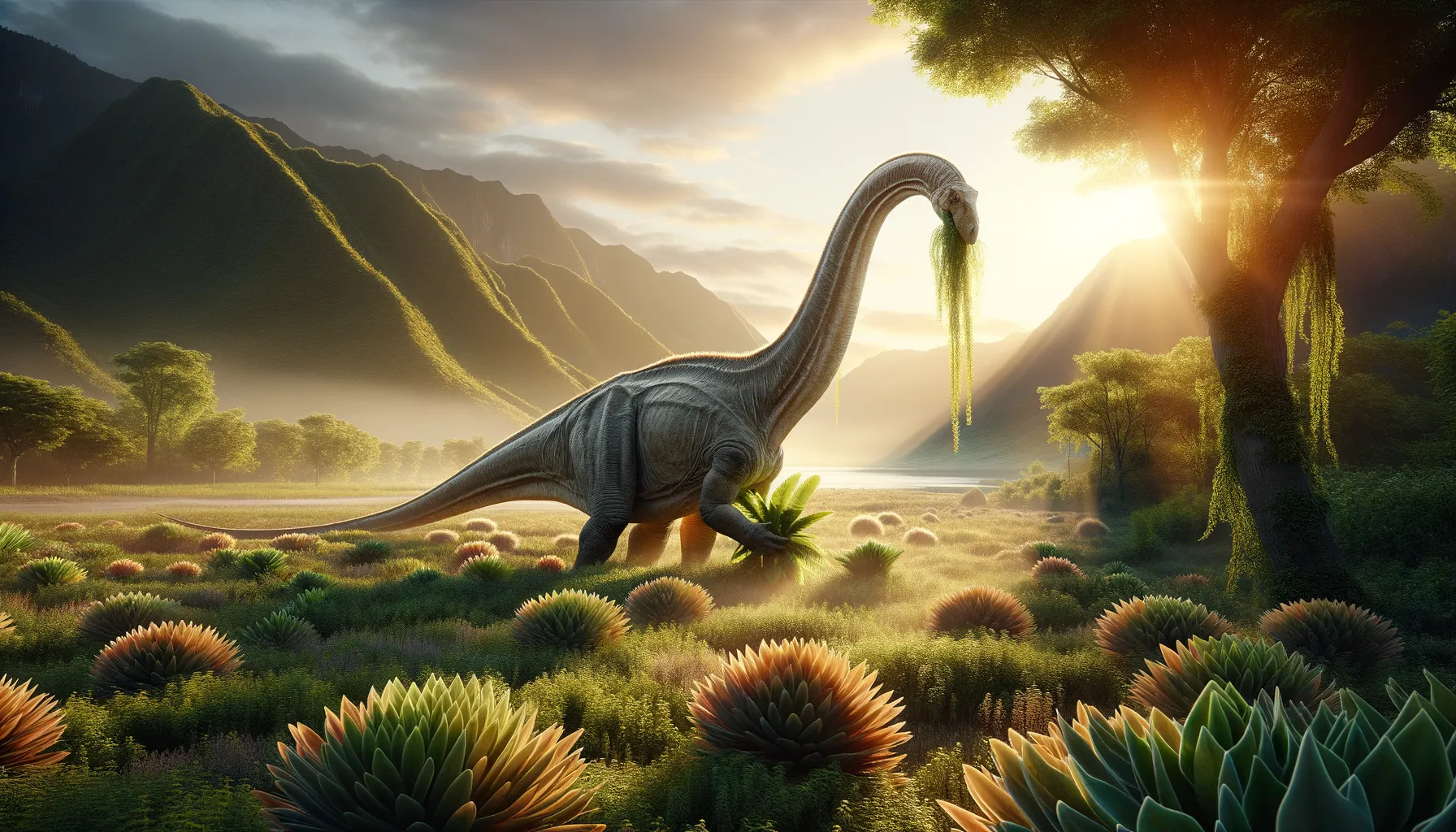
Anhuilong
Towering titan of ancient landscapes.
Period
Cretaceous
Length
Measured about 15 meters in length.
Height
Stood roughly 10 meters tall at the shoulder.
Weight
Likely weighed around 15,000 kilograms.
Anhuilong was a type of long-necked dinosaur, part of a group known as sauropods. Known for its impressive size, this dinosaur roamed the Earth during the Cretaceous period. Its fossil remains were discovered in China, providing important insights into the diversity of sauropods. While Anhuilong was huge in size, it primarily fed on plants and moved at a slow pace. Its long neck allowed it to reach foliage that other smaller herbivores could not.
Diet
Anhuilong was a herbivore, feeding on a variety of vegetation. Its long neck helped it to reach high leaves and branches, giving it access to food resources beyond the reach of shorter animals.
Hunting
Being a herbivore, Anhuilong did not hunt for food. Instead, it spent much of its time foraging for plants and using its height advantage to access food sources others couldn't reach.
Environmental challenges
Anhuilong faced challenges from uneven terrain and competition for food with other herbivorous dinosaurs. Predators posed a threat to its young, despite adults having fewer natural enemies due to their size. Environmental changes also required adaptability in its feeding patterns and migration to better climates.
Speed
It moved slowly, like other long-necked dinosaurs.
Lifespan
Estimated to live about 70-80 years in the wild.
First discovery
Discovered in Anhui Province, China in 2017.
Fun Facts
- Anhuilong is a genus of sauropod dinosaurs that lived during the Early Cretaceous period, around 120 million years ago.
- The name 'Anhuilong' means 'dragon of Anhui', named after the province in China where its fossils were discovered.
- Anhui is known for its rich fossil beds, which have provided scientists with many insights into life during the Cretaceous period.
- Anhuilong was a long-necked dinosaur, belonging to the group of dinosaurs called sauropods, which includes some of the largest animals to ever walk the Earth.
- Like other sauropods, Anhuilong likely had a small head compared to its massive body and moved on all four legs.
- The discovery of Anhuilong helps paleontologists understand more about the diversity and distribution of sauropods in ancient ecosystems.
- Anhuilong adds to the fascinating mosaic of dinosaur life that thrived on Earth millions of years ago.
Growth and Development
Anhuilong was likely to have experienced rapid growth, reaching large sizes by adulthood. Its growth rate was facilitated by a diet rich in plant materials, needed to sustain such large body size. Juveniles might have been more vulnerable to predators until they reached a size that ensured safety.
Habitat
Anhuilong lived in a variety of environments, from lush forests to open plains. These areas provided abundant plant life necessary for its survival. Its adaptability allowed it to thrive across different habitat types within its range.
Interaction with other species
Anhuilong coexisted with other herbivores, often competing for similar food resources. It would rarely interact with carnivorous dinosaurs, except when defending its young from potential threats. Its large size served as a deterrent against many predators.
Natural lifespan
It likely lived up to 80 years, barring predation or disease.
Reproduction
Anhuilong likely laid eggs in nests, similar to other sauropods. Parental care might have involved guarding eggs and hatchlings from predators. Young Anhuilong were susceptible to predation until they grew large enough to fend for themselves.
Social behaviour
Anhuilong may have traveled in herds, a common behavior among sauropods. Herding provided protection against predators and facilitated social interaction. These groups could have comprised individuals of various ages, offering safety in numbers.
Fossil locations
Anhuilong fossils have been found in Anhui Province, China. This region has provided a wealth of information about the diversity of sauropods in Asia. Discoveries have highlighted differences between Anhuilong and other related species.
